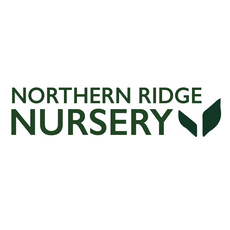How to Create Thriving Pollinator Gardens with Native Plants
Welcome, gardeners and nature enthusiasts! If you're passionate about contributing positively to your Local ecosystem while enjoying the beauty of your landscaping, this guide to creating thriving pollinator gardens using native plants is tailored just for you. By embracing the use of native plant species in your garden, you not only support local wildlife including bees, butterflies, and birds, but you also promote Biodiversity and ecological health in your community.
Understanding the Importance of Pollinators
Pollinators are crucial to the flourishing of ecosystems. They are responsible for the reproduction of over 85% of the world's flowering plants, including more than two-thirds of the world’s crop species. The United States alone grows more than 100 crops that either need or benefit from pollinators. However, these indispensable contributors to our ecological welfare and food supply face numerous threats due to habitat loss, pesticides, diseases, and climate change.
Creating a pollinator garden with native plants is an effective way to help combat these threats. Here's how to get started:
Selecting the Right Location and Size for Your Garden
A successful pollinator garden requires proper planning regarding its location and size:
- Sun exposure: Most native flowering plants and herbs require full sun for optimal growth. A site that receives at least six hours of direct sunlight is ideal.
- Soil condition: While native plants are adaptable, they thrive in well-drained soil. Conduct a soil test to tailor your soil amendment practices accordingly.
- Garden size: There's no "too small" when it comes to creating a pollinator-friendly garden. Even a few square feet of flowering native plants can be beneficial.
- Diversity: Choose a mix of plants to provide a variety of shapes, colors, and blooming periods to attract and sustain a wide range of pollinators throughout the season.
- Native shrubs and trees: These can provide shelter for pollinators in addition to serving as potential food sources.
- Season-long bloom: Ensure your garden has plants blooming from early spring to late fall to provide steady food supply for pollinators.
- Plant in clumps: Grouping the same species in clusters of three or more creates a "target" for pollinators, making these plants easier to find.
- Incorporate different plant heights: Layering plants with varying heights mimics natural habitats and provides intricate spaces for different species.
- Include pathways: Not only do pathways allow for human enjoyment and garden maintenance, but they also prevent soil compaction around the plants.
- Weeding: Keep the area free of invasive species that can compete with your native plants.
- Watering: Establish a watering schedule based on the needs of your specific plants, especially during dry periods.
- Avoiding pesticides: Chemicals can be harmful to pollinators. Opt for organic pest control methods to maintain the ecological balance of your garden.
Choosing the Right Native Plants
The backbone of any pollinator garden is its native plants. These are species that occur naturally in your region and are adapted to its climate, soil, and local wildlife. When selecting plants, consider the following:
To find the right plants for your area, consult local botanic gardens, native plant societies, or university extension programs.
Designing Your Pollinator Garden
A well-designed pollinator garden optimizes the health and happiness of its winged visitors. Consider the following guidelines:
Maintaining Your Garden
To ensure that your pollinator garden thrives, regular maintenance is essential. This includes:
Expanding Community Awareness
While establishing your own pollinator garden is a fantastic start, spreading the word and inspiring others can magnify the benefits of your efforts. Consider engaging with community groups, schools, or local government to advocate for pollinator-friendly initiatives and public green spaces.
Conclusion
Creating a pollinator garden with native plants is a rewarding endeavor that enhances your Local ecosystem's health and Biodiversity. By choosing the right location, selecting appropriate native plants, and maintaining the garden with care, you can make a significant positive impact on the environment. Additionally, these gardens bring unparalleled beauty to your landscape, supporting a diverse array of wildlife.
Start Your Pollinator Garden Today!
Embrace the role of an eco-conscious gardener by starting your pollinator garden today! Visit local nurseries, connect with native plant societies, and engage with online forums and resources. Every small garden contributes to a greater good. If you’re ready to make a difference, there’s no better time than now to begin.










